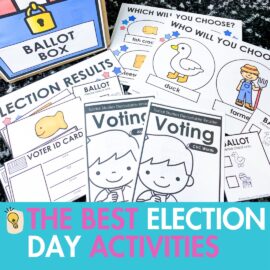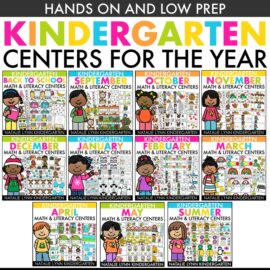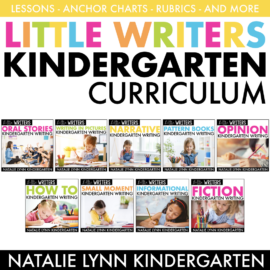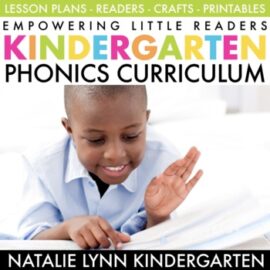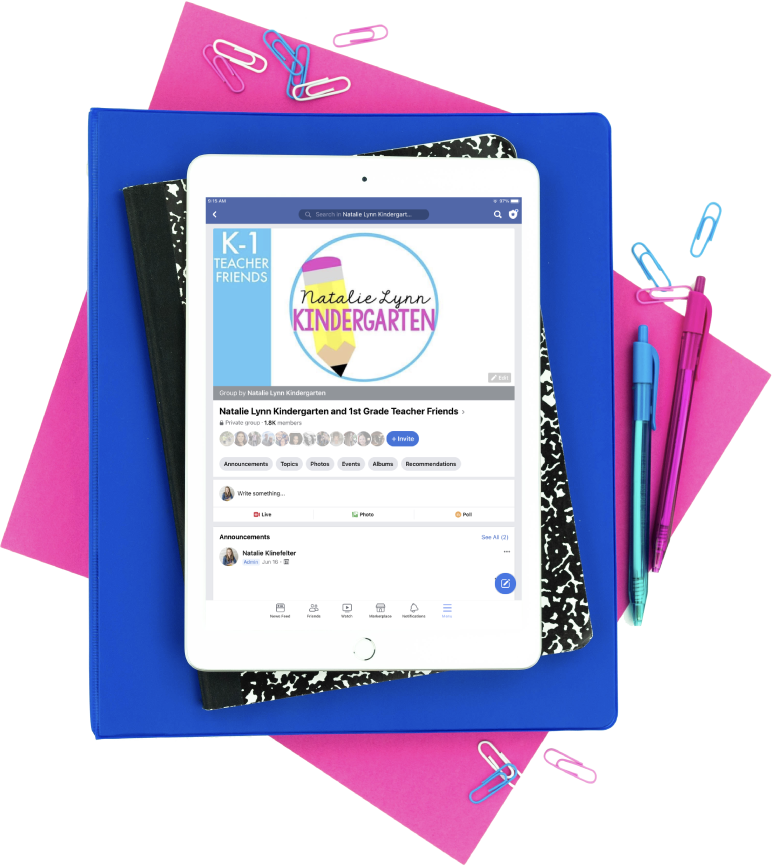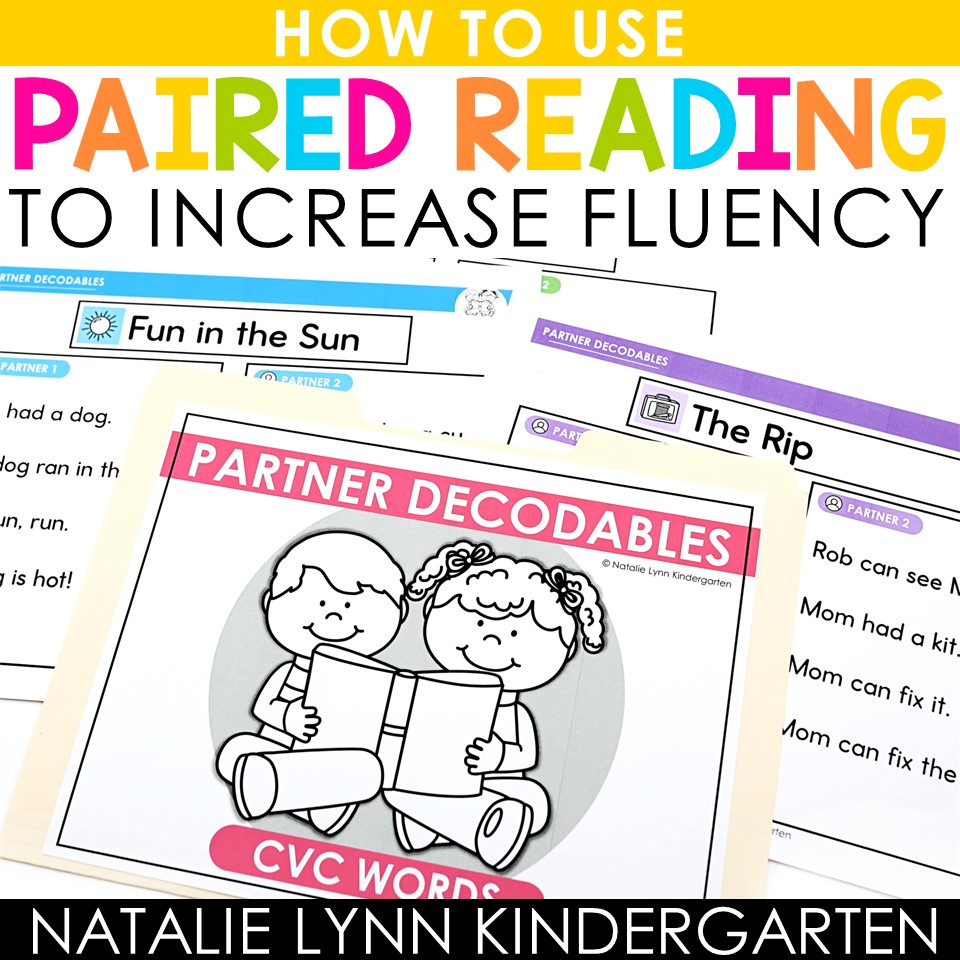
In this blog post: Learn how to use the paired reading strategy to increase fluency in your students and find the best partner reading resources from partner decodable readers to readers theater plays.
If you’re looking for effective, research based strategies to increase student fluency and support struggling readers, look no further than paired reading.
Paired reading, sometimes called partner reading, refers to an activity where partners take turns reading together. It sounds relatively simple, yet research shows that this strategy is highly effective for our beginning readers.
In this blog post, I will be walking you through what the benefits of paired reading are, what it can look like in your classroom, and helping you find the best partner reading resources.
The Benefits of Paired Reading
Research from Science of Reading shows that there are multiple benefits to implementing paired reading, or partner reading, in the classroom. Some of those benefits include:
Students are more willing to take risks in their reading. While a student may be hesitant to attempt to decode difficult words on their own or with a teacher, they are more likely to take chances with a peer.
Paired reading increases oral language and listening comprehension. We know that listening comprehension needs to go hand-in-hand with decoding to build strong reading comprehension skills. Partner reading gives students a chance to work on both of those things.
Students receive support in their reading practice. By partner reading, students have built it support if they struggle with any words.
Paired reading works on cooperation. Partner reading requires students to work together, take turns, and follow conversational rules.
Teachers can support more students. Rather than working with only a few students at a time, paired reading allows the teacher to move around the classroom listening to and supporting all readers. This gives you an opportunity to informally assess, teach, or simply support.
![paired reading for fluency [picture shows two students together at a table pointing to a book]](https://natalielynnkindergarten.com/wp-content/uploads/2023/06/Depositphotos_163787128_S.jpg)
Of course, there are a few downsides to paired reading as well.
If students are not paying attention to the text when their partner is reading, they will be working on listening comprehension but not reading comprehension. They will also be unlikely to catch if their partner makes a mistake, which could reinforce poor reading habits.
You can minimize this by being intentional in teaching expectations and then holding students to them.
You can also explain WHY it is important for students to be reading along with their partner. Sometimes just having the why is motivation for students.
Another downside comes if you always pair struggling readers with strong readers. While this provides support for the beginning reader, it can become frustrating to the strong reader.
You can alleviate this frustration by changing up how you pair students for partner reading.
How to Implement Paired Reading
There are a few different ways that you can implement paired reading in the classroom, and you might find that you want to switch it up depending on the day.
Group a fluent student with a less-fluent reader.
By pairing a less-fluent reader with a strong reader, you provide modeling and support for your struggling readers. The less-fluent reader has the opportunity to hear fluent reading being modeled and can receive support if the struggle with the text.
Fluent readers may also enjoy feeling helpful, but be careful not to rely on them too much to be the “teacher.” It can get frustrating to our fluent readers to always be helping and not feel challenge.
Pair students working on the same skills.
While this strategy may take away some of the support that students receive from reading with stronger partner, that doesn’t make this a bad choice. When students partner read with someone at their level, they have the opportunity to work on the skills they need to work on, hear and support someone working on those same skills, and they may be more willing to take risks.
Allow students to create their own pairs.
You can also allow students to choose their own partners for paired reading. The benefit to this strategy is that students may have more buy-in and be more willing to take risks and/or support their partner. This is also an ideal strategy to use if you want to make paired reading an option during your literacy centers time.
What Should Paired Reading Look Like
When introducing partner reading in your classroom, it’s important that you model the procedures and expectations that you want to see, and that you continue to reinforce those throughout the year.
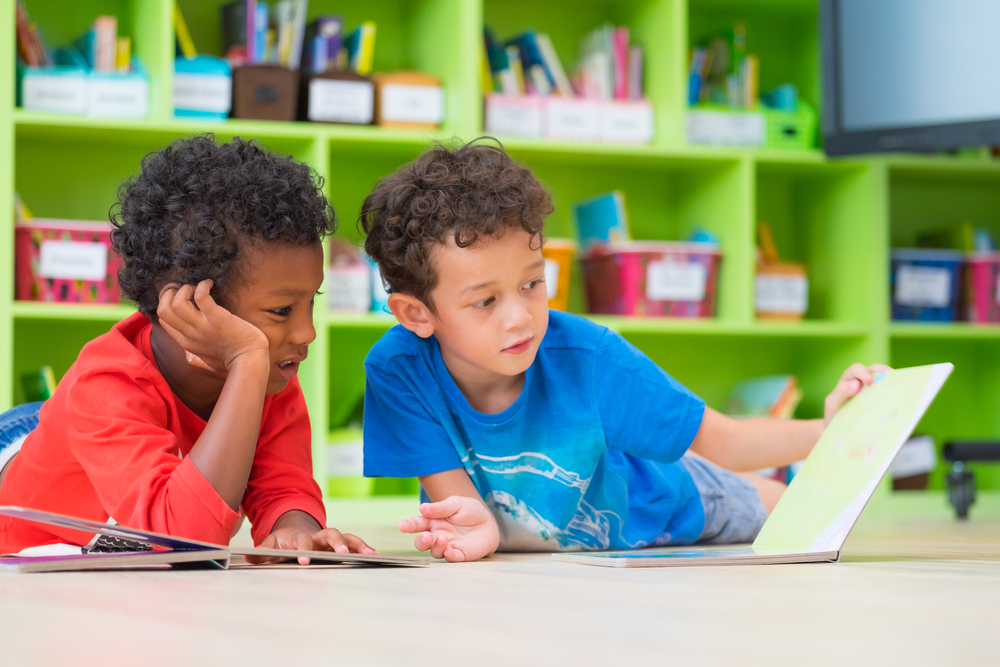
When first introducing paired reading, you will want to model and teach:
- How to find your partner
- Where to get the partner reading text
- Where to sit
- How to sit together
- Where to place the text
- How to take turns
- How to listen to and support your partner
- What to do when you are finished
In your classroom, paired reading might look like: Two students sit side by side with the partner reading text between them or on both of their laps. The first partner reads out loud while their partner follows along and supports. Then, they switch and the second partner has a chance to read. Finally, the partners discuss the text and may even fill out a comprehension sheet about it.
If you want to discuss as a class after, you can ask students questions such as: Who were the characters? What happened in your story? What was your favorite part?
The Best Resources for Paired Reading
When you’re considering resources for paired reading, consider how they are set up and how they will support the skills you are trying to teach. Below, I have two of the best resources for paired reading in elementary.
Partner Decodable Readers
These partner decodable readers are unique in that they were designed specifically for paired reading. The partner texts are laid out so that partner one reads half of the text, and then partner two reads the other half of the text.
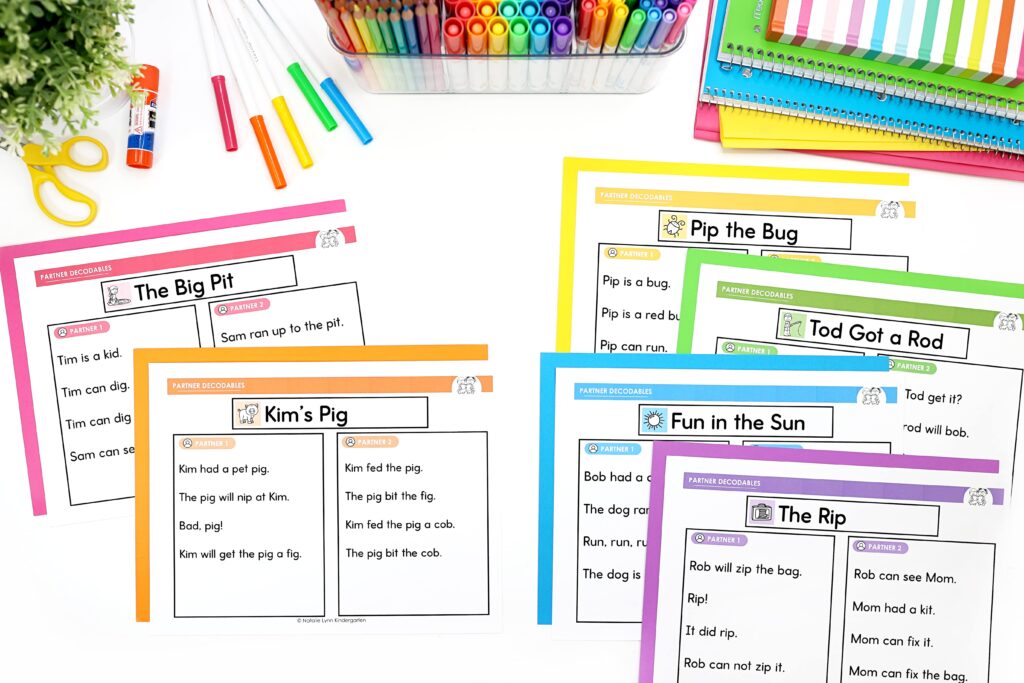
The Partner Decodable Readers bundle covers all of the skills in my Phonics Scope and Sequence, and the texts build in complexity, so you know that every reader is getting the practice that they need.
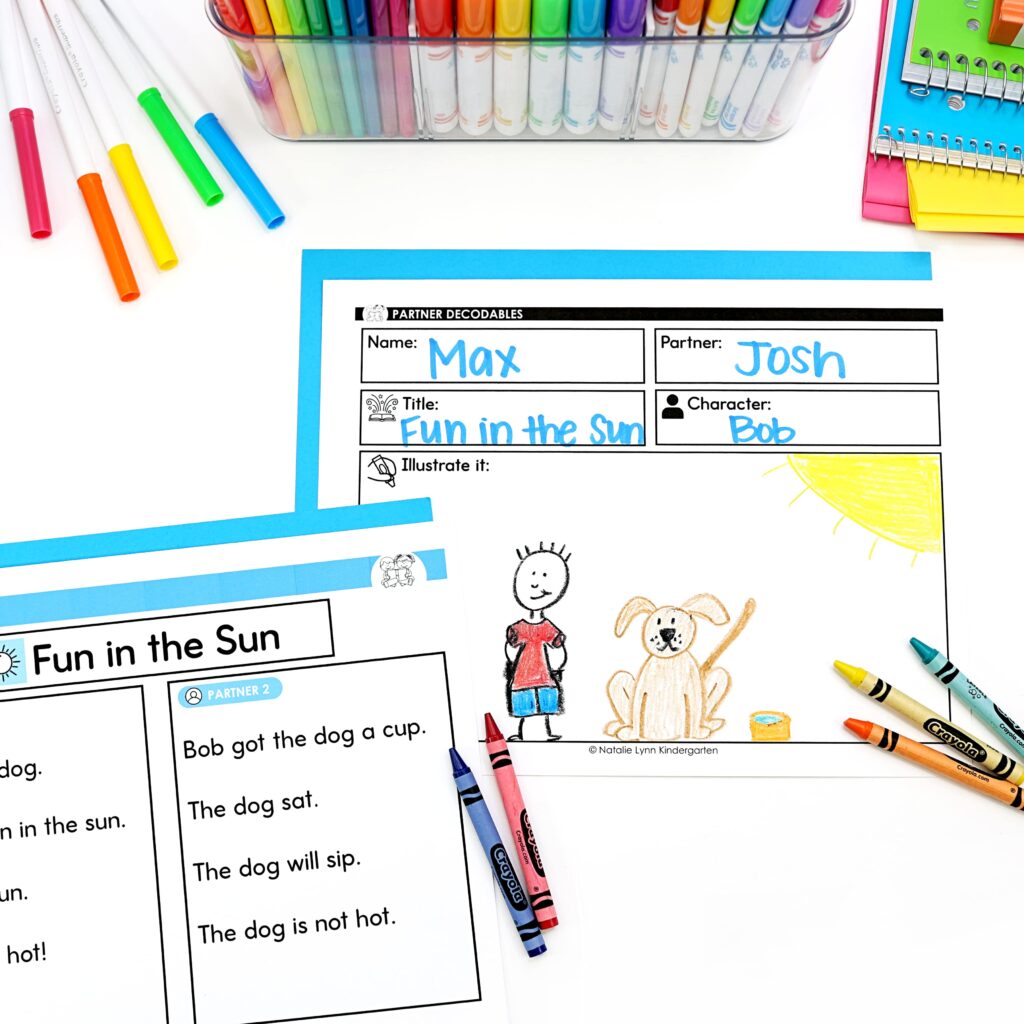
After students read a partner decodable reader story, they can follow it up with a recording sheet either illustrating the story, retelling the story, or writing about their favorite part of the story.
Find the Partner Decodable Readers here.
Decodable Partner Plays
Another great option for paired reading are decodable partner plays. You can use these plays for a decodable readers theater, or simply as a paired reading exercise.
![decodable partner plays for readers theater in Kindergarten [picture shows the script and mini book for the play At The Dock]](https://natalielynnkindergarten.com/wp-content/uploads/2023/06/DigraphBlendsPartnerPlays3square-min-1024x1024.jpg)
Decodable partner plays are a great option for paired reading because dialogue is often easier for our readers to read and understand. The flow of the conversation helps the story move along.
Each of these decodable partner plays are 2-3 pages long, and they follow my phonics scope and sequence, building in complexity as the skills go on.
Partners will choose characters. If performed as a decodable readers theater play, students can use the character hats, nametags, or puppets.
![CVC words decodable partner plays readers theater materials for the play The Bug [picture shows the Now Playing sign, character nametags and hats, mini book, and script for the play]](https://natalielynnkindergarten.com/wp-content/uploads/2023/06/CVCPartnerPlays1-min-1024x683.jpg)
For this paired reading activity, partners will read the dialogue back and forth. Since it is dialogue, it naturally lends itself to expression and fluency.
After reading, students can cut apart and create the mini-book version of the play. That means that they can add the partner text to their book box or take it home to read again. If performed as a readers theater, other students can also follow along with the performance using the mini books.
Students can also fill out an optional recording sheet about their decodable partner plays. These recording sheets will help students retell what happened in their own words.
Find the Decodable Partner Plays here.
In Conclusion
For students who need more practice and support in reading, paired reading is a beneficial strategy that you can improve reading fluency. Now that you know the how to, the benefits, and some effective resources for paired reading, I hope that you’ll consider implementing it in your classroom this year.
Want to learn more about the Science of Reading? Check out these blog posts:


